Discover 6 Types of Owls in North Carolina
Owls are some of the most well-known raptors, known for their swiveling heads and large eyes. There are around 250 different species of owls in the world. However, how many types of owls are there in North Carolina? Continue reading below to learn about the owls in North Carolina, from their appearances to their habitats.
Eastern Screech Owl
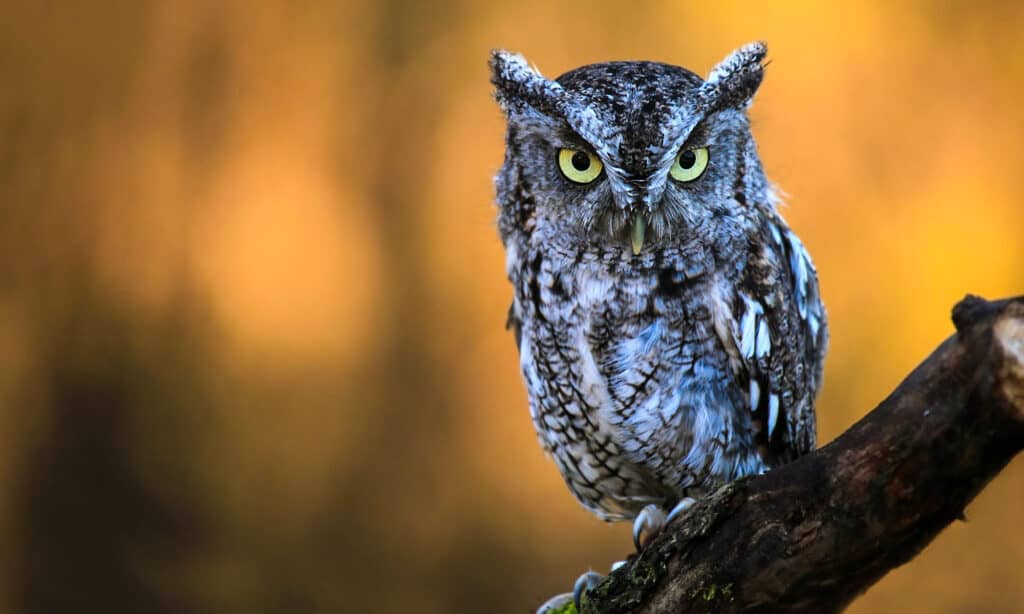
©mlorenz/Shutterstock.com
Although declining in some areas, eastern screech owls (Megascops asio) are widespread in North Carolina as year-round residents. They can be found throughout much of eastern North America, from Canada to Mexico. Although this species is a dense woodland denizen, they have adapted well to surviving alongside man-made structures and humans.
There are several subspecies of eastern screech owl. There are also distinctive morphs, including a gray morph and a rufous or red morph. A less common brown morph may be found exclusively in the state of Florida. This morph may be a hybrid, or intermediate, morph of the species.
Great Horned Owl
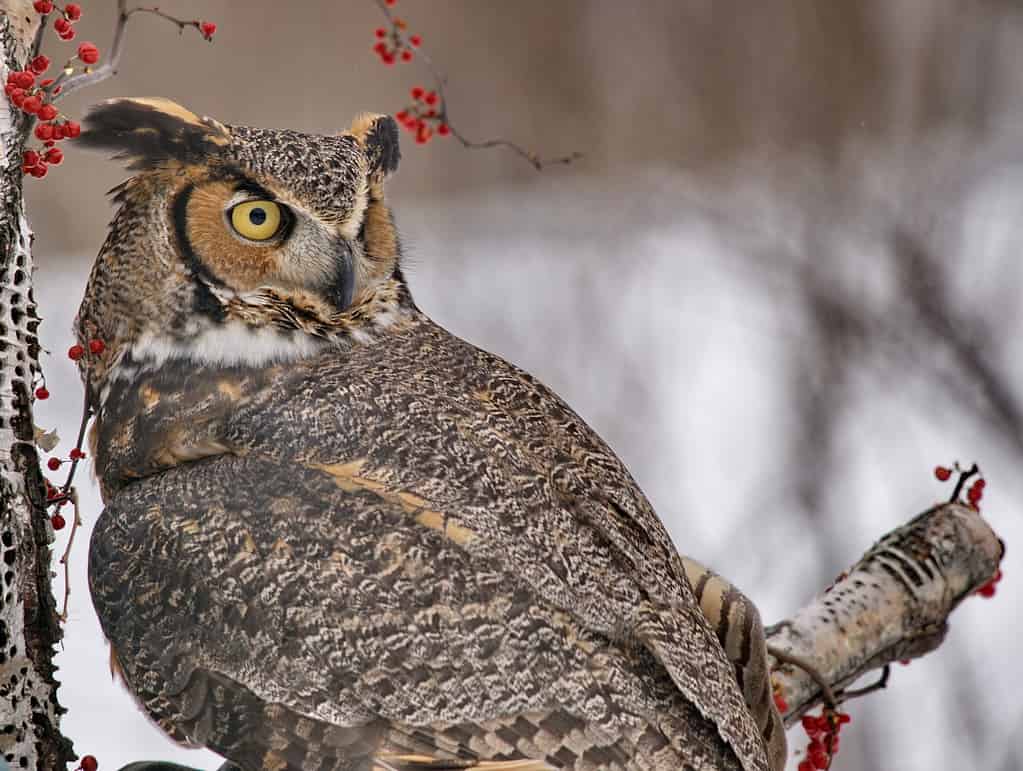
©cindylindowphotography/Shutterstock.com
When many people think of an owl, they think of the great horned owl (Bubo virginianus). Also known as the tiger owl, the great horned owl sports large, yellow eyes; earlike tufts of long feathers; and an unmatched hunting prowess. Adults of this species can take on large prey, including other raptor species like falcons, ospreys, and other owls!
Great horned owls can be found throughout North and South America. They can thrive in nearly every semi-open habitat, from urban areas to deserts and forests. Although they are a rather large species, breeding pairs may settle in man-made nesting boxes.
Barred Owl
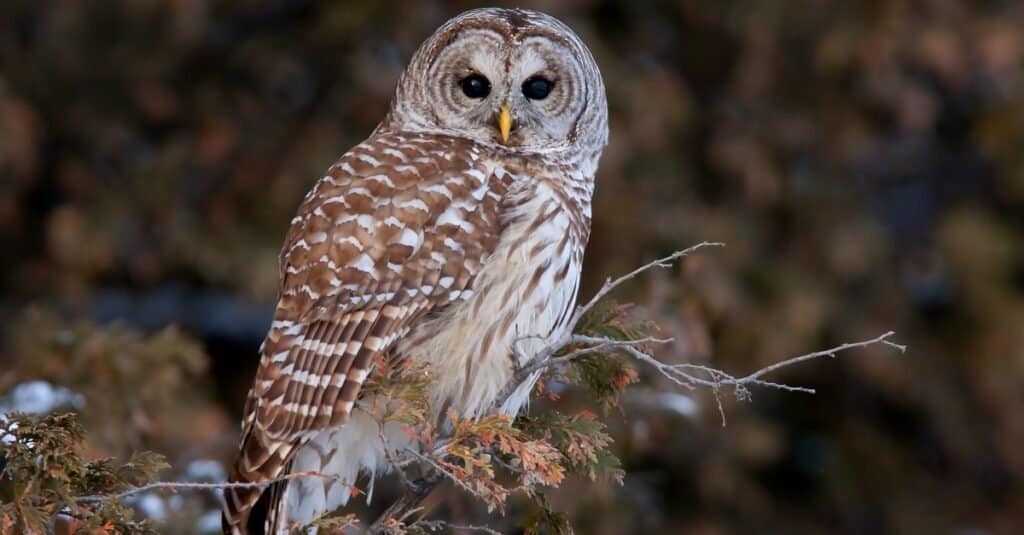
©Jim Cumming/Shutterstock.com
The barred owl (Strix varia) is likely one of the most common, and one of the most well-known, owls in North Carolina. Their charming but spooky hoot is often described as a “who-cooks-for-you” sound. Barred owl is just one of their many names, with others including northern barred owl and striped owl. They are named for their appearance, which features an overall dark plumage with notable markings on their underside.
There are several different subspecies of barred owls that may vary in appearance based on location. They are most abundant in the eastern regions of North America. However, they have been growing on the western coast as an invasive species.
Barn Owl
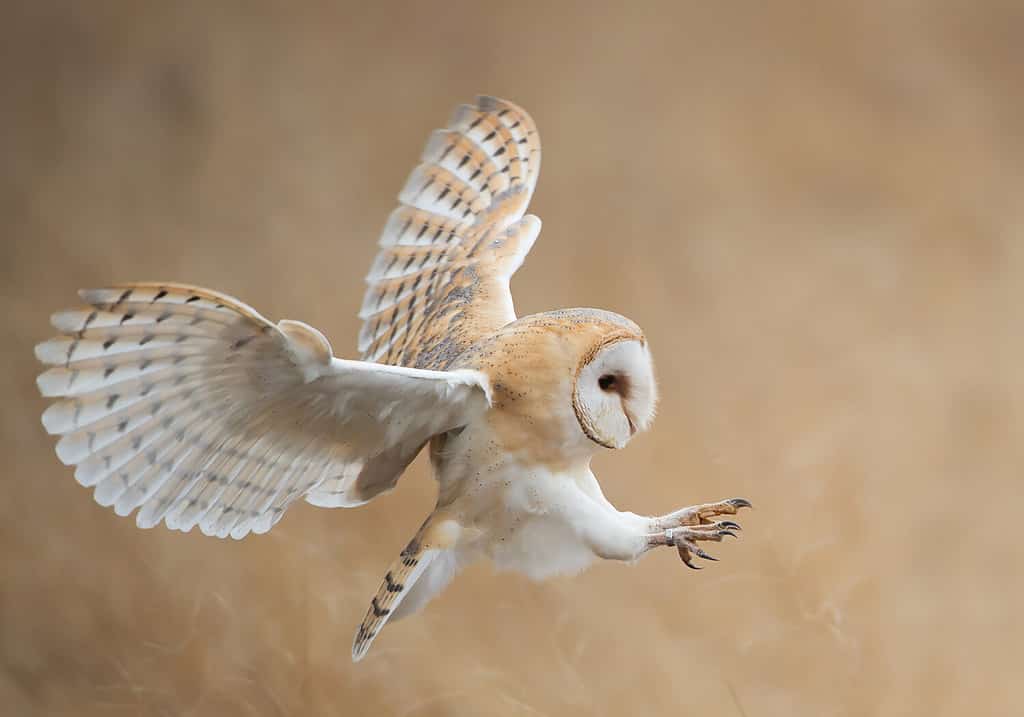
©MZPHOTO.CZ/Shutterstock.com
Barn owls (Tyto alba) have a distinct appearance, with round, pale faces and brown wings sporting small black and white markings. They are considered to be not only one of the most widespread species of owls but of birds as a whole. They are found on every continent but Antarctica. Barn owls are found throughout the entirety of Soth America and Australia, though they reside in most of the other continents. In Asia, they are most common in the southern countries.
This species has a distinct call that doesn’t resemble the “hoot” of most other owls, although many still describe the high-pitched screech as eerie.
Short-Eared Owl
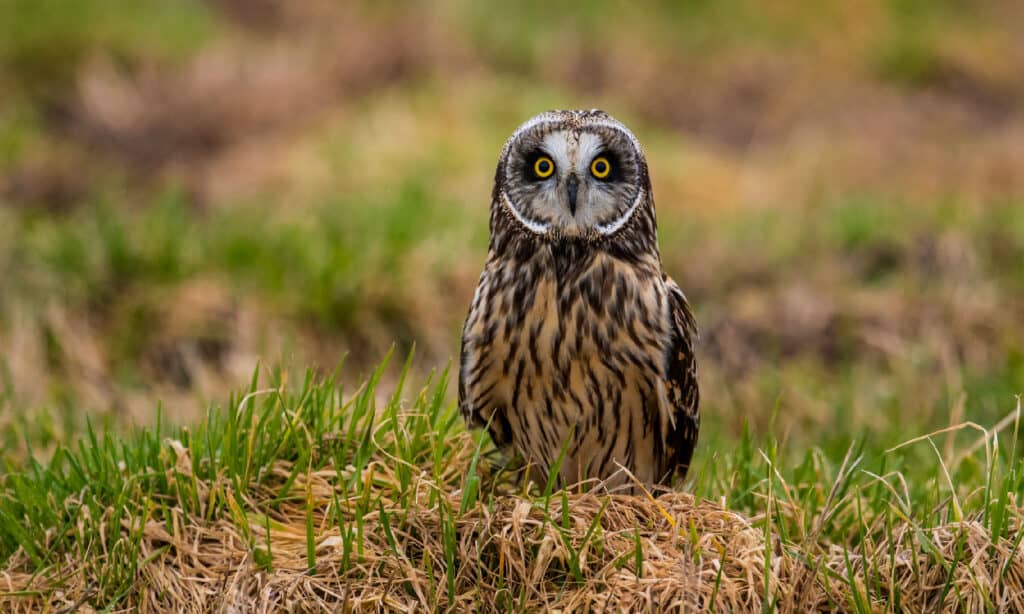
©iStock.com/Harry Collins
The short-eared owl (Asio flammeus) is not a common species of owl in North Carolina. Unlike the majority of other species on this list, the short-eared owl is a migratory species. As a result, they won’t reside in North Carolina all year.
Short-eared owls are only found year-round in specific areas, such as in South America, the northwestern United States, and southwestern Canada. They spend their breeding season in the far north areas of North America. Because of this, if you’re instead in seeing short-eared owls in North Carolina, you’ll need to look for them in the nonbreeding season. This occurs during the winter months.
During the winter months, though, short-eared owls can be found throughout North Carolina. They prefer to live in open spaces that sport low vegetation. Their diet mainly consists of small mammals, but they will also eat other birds. Their hunting tactics can be brutal, with this species often stripping small birds of their wings prior to eating them.
Northern Saw-Whet Owl
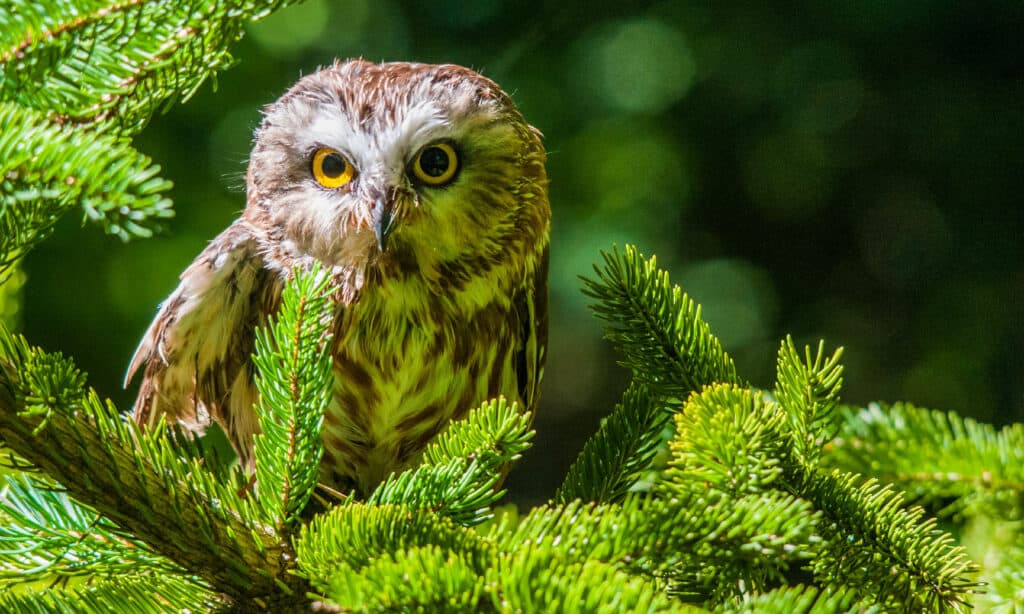
©iStock.com/bookguy
Northern saw-whet owls (Aegolius acadicus) are native only to North America. They are a rather small species, with a round head and large eyes. Unlike some other species of owls, they have no ear tufts. However, they do sport a distinct white “V” shape between their eyes. This shape is especially notable in juveniles, as they lack any of the white markings of adults.
This species will often nest in the holes left by different species of woodpeckers. This includes northern flickers and pileated woodpeckers. While nesting and brooding, the female will remain at the nest while the male will provide all of the food. You can often hear their “too-too-too” call from where they perch or nest.









